What You’ll Get from Our Blog:
Check out our latest posts and start leasing with confidence!
5/27/25 - The Psychology of the Perfect Truck

The Psychology of the Perfect Truck
Walk into any truck stop and ask the drivers sitting at the counter about their favorite rig. They will not hesitate. They will tell you about the one with the quietest cab, the smoothest shift, the seat that did not murder their spine over a ten-hour day. They will describe how the dash was laid out, where the cupholders sat, and how the ride felt as it chewed up asphalt from Memphis to Missoula. This is not just nostalgia. It is operational insight hiding in plain sight.
A truck is more than metal and torque. For the driver, it becomes an extension of their body. A good cab is a workplace, a bedroom, a sound studio, and a confessional booth. The comfort and function of that space influence mood, decision making, and ultimately performance. When a driver loves their truck, they take care of it. They run longer. They idle less. They stay.
It is easy to dismiss this as soft science. After all, uptime is measured in hours and cost per mile. But behind those metrics are people, and people respond to tools that treat them like professionals. A truck with an intuitive layout and minimal vibration can reduce fatigue just as effectively as any rest break. That means fewer mistakes. Fewer near-misses. Fewer phone calls at midnight that start with the words “We’ve got a situation.”
Fleet managers often think about specs, not feelings. But those feelings are what keep your best drivers from walking. A rough ride, a noisy cab, or a worn-out bunk are silent liabilities. They may not show up in your spreadsheets until the turnover spikes or your new guy quits before the second load. Then it hits. You gave them a truck. You did not give them a tool they could trust.
This is where leasing strategy becomes something more than financial optimization. When you rotate your fleet consistently, you are not just protecting residuals. You are giving your team access to the latest creature comforts that manufacturers have baked in after listening to drivers. Better HVAC. Quieter insulation. Smarter control layouts. These are not luxuries. They are the modern cost of loyalty.
REL customers often tell us the biggest shift they notice is not in the balance sheet. It is in morale. Drivers feel like they matter when they step into a clean, well-specced truck that smells like potential instead of neglect. That psychological edge turns into business advantage. Fewer breakdowns. Better attitudes. More miles.
You do not need to be a psychologist to understand this. You just need to ask your team what their favorite truck was. Listen to what they say. Then ask yourself how often you give them the chance to feel that again. If the answer is “only when someone quits,” your fleet may be performing at half its potential.
In a world where driver retention is the new logistics gold, the perfect truck is not just a machine. It is a message. It says: we see you, we value you, and we want you to stay.
5/20/25 - Why REL's Simple Billing Model Beats the Industry Giants Every Time
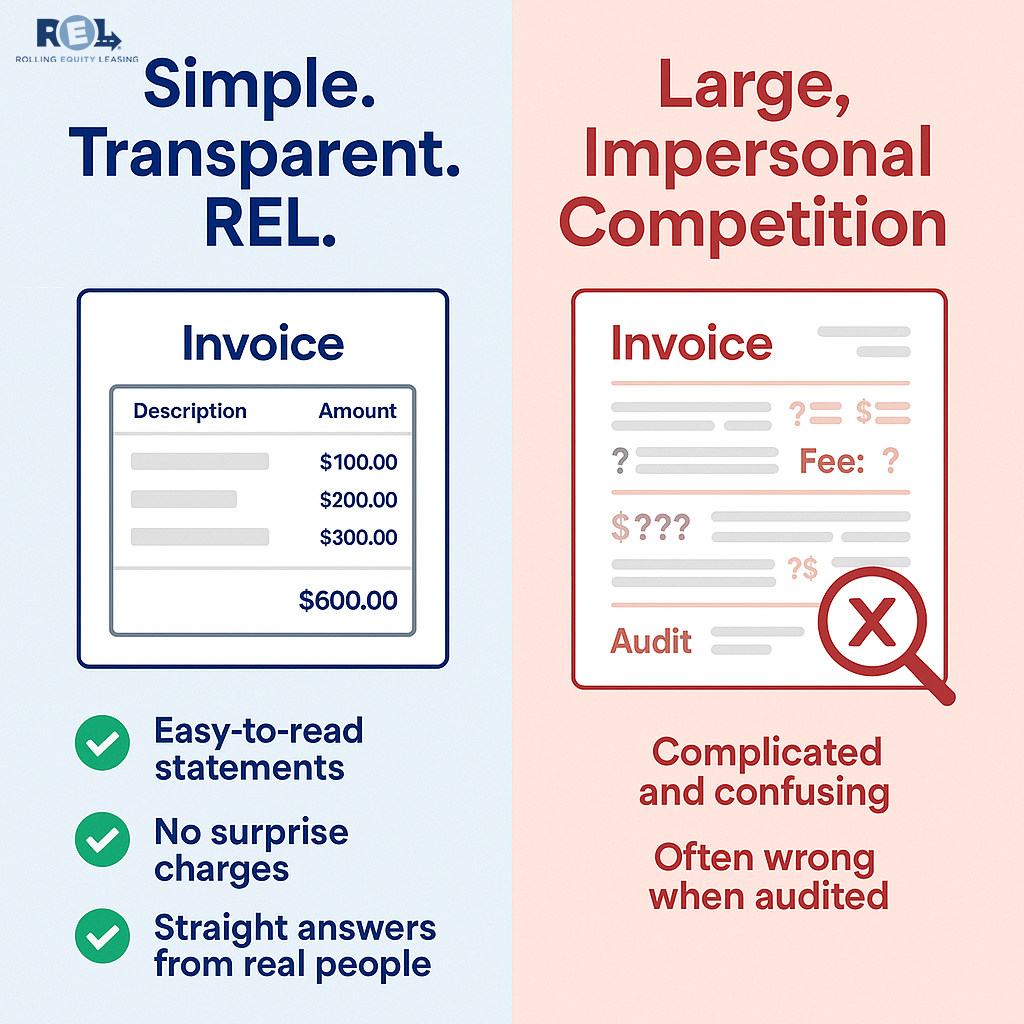
Why REL’s Simple Billing Model Beats the Industry Giants Every Time
In the trucking and logistics world, clarity is power. Every line item, every invoice, and every lease detail should be easy to understand, especially when you’re running on tight margins and tighter schedules. That’s why at Rolling Equity Leasing (REL), we’ve built our billing system to be transparent, accurate, and painfully simple.
Let’s be honest: many of the large leasing companies out there treat their invoices like a puzzle. Confusing fee structures, vague line items, unexplained surcharges, it’s not just frustrating; it’s operationally dangerous. When your business relies on knowing exactly what you’re paying for and when, you don’t have time to decipher 10-page statements filled with bureaucratic lingo and hidden costs.
We’ve had more than a few customers come to us after realizing that their previous leasing invoices couldn’t survive a basic audit. Inconsistent rates, duplicate charges, and unexplained penalties were all buried in the fine print. These aren’t just one-off errors, they’re symptoms of bloated systems run by people too far removed from your business to care.
REL does things differently. Our invoices are short, readable, and built for real-world operators. You’ll know exactly what you’re paying and why, no surprise charges, no “miscellaneous fees,” no legalese. Just a clean, honest record of what matters: your trucks, your terms, your bottom line.
We believe transparency should be the default, not a luxury. That’s why our statements come with clear descriptions, consistent pricing, and easy access to real human beings who can explain anything you don’t understand. You won’t get passed around to five departments or wait weeks for clarification. You’ll get a straight answer, fast.
In fact, we encourage audits. We welcome scrutiny. Because we know that trust is earned in the details. Our billing system is lean by design, it exists to serve you, not to pad profits through confusion. That confidence comes from knowing we’ve built a structure where accuracy and simplicity reinforce each other.
And let’s not forget: accurate billing isn’t just a nice-to-have. It’s the foundation of trust between us and our customers. When we say we’re your partner, not just your lessor, we mean it. That means giving you the tools and the clarity, you need to make fast, informed financial decisions for your fleet.
So the next time a lease invoice hits your inbox, ask yourself: Is it helping you run your business, or slowing you down? If it’s the latter, maybe it’s time to switch to a billing model that puts you first. REL is ready when you are.
5/13/25 - FedEx Reconnects with Amazon: What It Means for TSPs and the Future of Final Mile
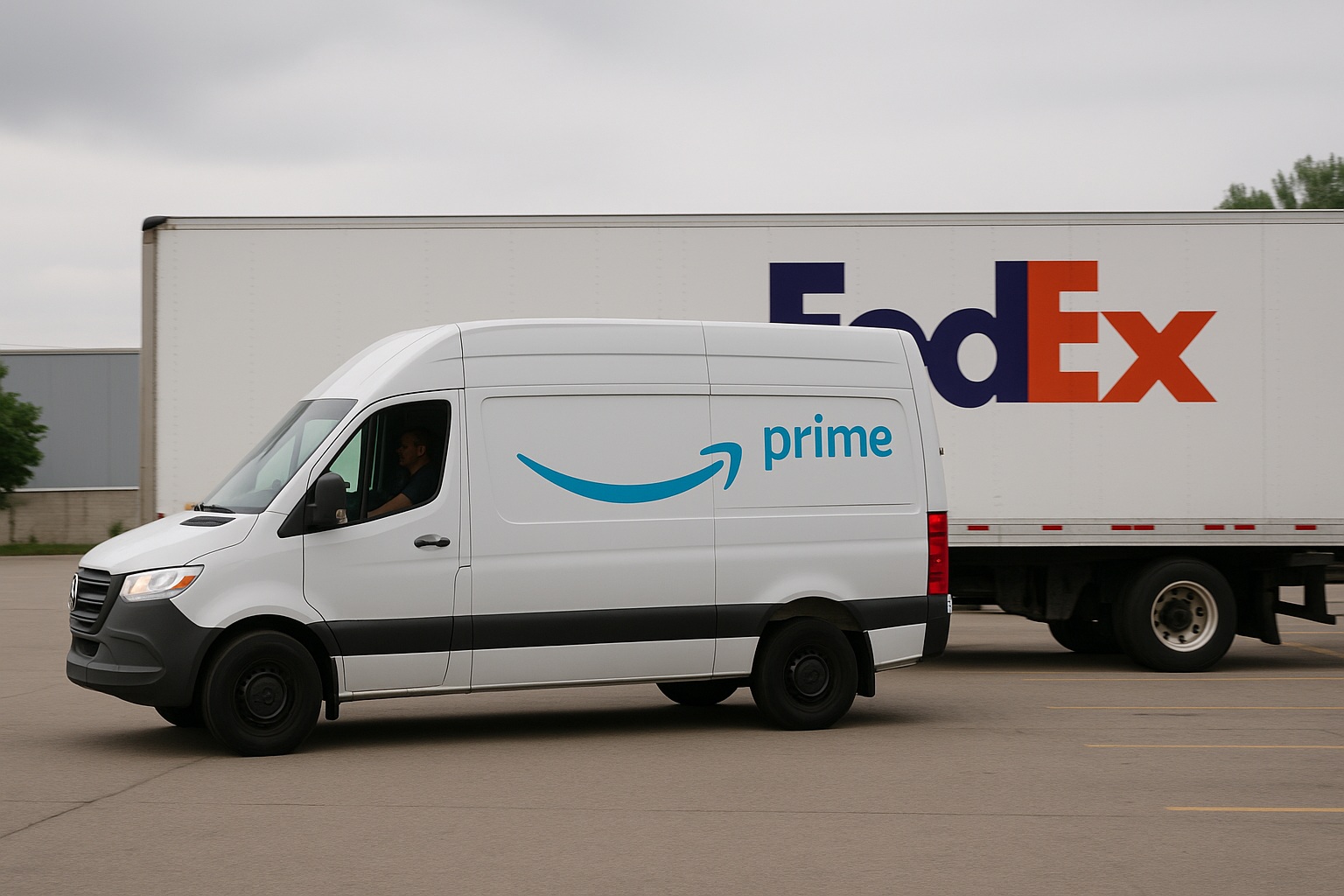
FedEx Reconnects with Amazon: What It Means for TSPs and the Future of Final Mile
In a move that is sending shockwaves through the logistics industry, FedEx has reportedly entered into a new agreement with Amazon, stepping in to handle a portion of the e commerce giant’s package volume recently dropped by UPS. The deal, first reported by The Information, marks a major shift in what had been a cold war standoff between two delivery powerhouses.
If you are a FedEx Transportation Service Provider, this is more than a corporate headline. It is a signal flare.
🧭 From Rivalry to Realignment
Rewind to 2019. FedEx ended both ground and air contracts with Amazon, citing competitive conflict. Amazon, after all, was rapidly building its own logistics empire with aircraft, sort centers, delivery vans, and more. Tensions ran high. FedEx leaned into serving a broader base of customers, and Amazon leaned harder into self reliance.
Fast forward to 2025 and the narrative is changing. UPS, Amazon’s largest third party carrier, announced last month that it would scale back its Amazon relationship as part of a “Better Not Bigger” strategy. That left a gap.
FedEx is now stepping into that gap. Quietly. Strategically. Just in time for the high stakes holiday delivery season.
🚚 Why This Matters for FedEx TSPs
REL has long said it. Fleet flexibility and strategic alignment are your edge in this volatile market. This Amazon FedEx realignment reinforces that truth. Here is why TSPs should be paying attention:
New Volume Equals New Pressure FedEx absorbing Amazon packages means added freight flow across the network, especially last mile. Expect fluctuations in routes, timing, and vehicle needs. Is your fleet ready
Holiday Surge is Coming The timing of this deal is no accident. Peak season will strain every corner of the network, and FedEx is now positioned to play a bigger role in Amazon’s fulfillment strategy.
The TSP Opportunity Window Is Expanding With Amazon diversifying its carrier partnerships, FedEx’s delivery ecosystem just became more valuable. That means increased opportunities for TSPs who can deliver consistent performance and adapt quickly.
📊 What the Market Is Saying
Wall Street liked the news. FedEx shares jumped around 2 percent following the announcement. Investors see this as a smart capacity play. FedEx has idle resources following the pandemic surge and needs volume. Amazon needs stability and trusted delivery partners.
According to MWPVL data, Amazon shipped nearly 6 billion U.S. packages last year, and while 87 percent were handled in house, the rest went to external carriers. As UPS steps back, FedEx just stepped forward.
🔧 What REL Is Watching
At REL, we are closely monitoring how this shift affects leasing demand, regional delivery density, and vehicle utilization across TSP territories. Here is what we are preparing our partners for:
Increased Short Term Leasing Activity Expect a spike in demand for day cabs and straight trucks in urban and suburban markets as capacity tightens.
Strategic Truck Cycling TSPs should evaluate whether aging vehicles can handle higher mileage demands or if it is time to rotate out and up.
Digital Load Coordination As routes evolve and volume fluctuates, the ability to access self service vehicle data and adapt quickly will separate responsive fleets from reactive ones.
🚀 Final Thought: Adaptability Is the Asset
FedEx’s renewed connection with Amazon is not about loyalty. It is about leverage.
TSPs who align their operations to match these new currents, especially those who partner with responsive leasing providers like REL, stand to benefit. This is not just more freight. It is a structural shift. And those who read the signals early will stay ahead of the pack.
REL exists to help FedEx TSPs navigate these moments, not just with trucks, but with intelligence. Our team is already analyzing how this partnership may evolve, and we are ready to support your fleet through it.
Stay nimble. Stay informed. And above all stay ready.
5/7/25 -Class 8 Truck Orders Collapse in April: What Fleets Need to Know

Class 8 Truck Orders Collapse in April: What Fleets Need to Know
The latest numbers from FTR Transportation Intelligence paint a stark picture: Class 8 preliminary orders plunged to just 7,400 units in April—a stunning 54% drop month-over-month and year-over-year. This is the lowest monthly total since May 2020, when pandemic lockdowns froze the freight economy. For context, April’s seven-year average sits at 18,963 units. We’re now tracking at less than 40% of that benchmark.
This steep decline is not just a blip—it’s a reflection of deeper pressures across the industry. Tariff escalations, economic uncertainty, and an anemic freight market are all converging to cool fleet investment. FTR notes that net orders for 2025 model-year trucks are down 30% compared to last year, while retail sales have slipped 10% year-over-year through March. Confidence, it seems, is evaporating—particularly among small to midsize operators.
Fleets appear to be pulling back not only from new commitments, but also from existing ones. Cancellations are rising, especially among both on-highway and vocational segments, which each saw sharp month-over-month declines. Cumulative Class 8 net orders for the 2025 season (September–April) have fallen 11% year-over-year, showing that this downturn isn’t isolated to a single month—it’s structural.
Dan Moyer, FTR’s commercial vehicle analyst, points to tariffs as a key accelerant. “New and pending U.S. tariffs and retaliatory tariffs will significantly increase costs for Class 8 trucks, tractors, and components,” he warned. With costs rising, rates soft, and capital tightening, fleets are understandably hesitant to lock in new orders, especially with uncertainty hanging over production schedules and lead times.
Further complicating the picture: the looming overhaul of EPA’s NOx regulations, expected to take effect in 2027. That rule change could spike prebuy activity down the road but for now, it’s just one more reason for fleets to delay investment decisions until the regulatory picture becomes clearer. As Moyer noted, “it’s unclear how long these depressed demand levels will persist.”
One downstream effect of this pullback will likely be tighter new truck inventories in 2026, especially if demand rebounds faster than production can adjust. OEMs and suppliers are already facing planning challenges, and reduced build schedules could leave dealers short on units next spring, particularly on high-spec vocational and sleeper tractors. For leasing and rental operators, this dynamic could widen the value of low-mileage, off-lease inventory and make flexible fleet strategies even more important.
4/28/25 - Rolling Strong at the 2025 Linehaul Summit

Rolling Strong at the 2025 Linehaul Summit
The 2025 Linehaul Summit proved to be an incredible gathering of energy, innovation, and collaboration across the FedEx TSP community. Rolling Equity Leasing was proud to be right at the center of it all, connecting with both new and longtime partners who are shaping the future of linehaul operations. From insightful breakout sessions to strategic conversations on fleet management and truck cycling, the Summit reinforced why this community is one of the strongest in transportation today.
One of the true highlights of the event was the awarding of our Military Appreciation Truck Giveaway. After careful consideration of many impressive candidates, Black Trident Trucking was honored as this year’s winner. Black Trident, founded and operated by veteran Tyler Wise and his wife Page, has exemplified the work ethic, discipline, and commitment to excellence that drive both military and linehaul success. It was a proud moment for all of us at REL to recognize their impact and present them with the keys to a brand-new truck, fully outfitted to help take their business to the next level. Also, a big shout out to runners-up, Top Hand Trucking and Blues City Carriers ROSO and all the other contestants who help make this contest such a success!
The giveaway is more than a prize — it’s a statement of gratitude. At Rolling Equity Leasing, we believe that the values forged in service to our country directly translate to leadership in the transportation world. Black Trident Trucking stands as a perfect example of that mission in action, and we couldn’t be more honored to support their continued growth. Thank you to every veteran-owned business that applied this year. You inspire us every day.
Of course, no great Summit experience would be complete without a proper celebration. REL’s Afterparty brought together customers, partners, and industry leaders for an unforgettable evening. With live music, food, and a few well-earned toasts, it was the perfect way to cap off an intense and inspiring few days. We believe that strong business relationships are built not just in boardrooms — but in real moments shared together. And judging by the energy at the afterparty, the future looks very bright.
The 2025 Linehaul Summit reminded us all just how much potential there is in this industry when we invest in people, innovation, and partnerships. REL remains committed to pushing the boundaries of what’s possible for FedEx TSPs, with smarter leasing solutions, stronger service, and a focus on long-term success. We’re proud to stand shoulder to shoulder with the operators who move America forward every day.
Thank you to everyone who made this Summit such a powerful experience. And a special thanks once again to Black Trident Trucking — we can’t wait to see what you achieve with your new rig! Until next time, we’ll keep rolling strong. Make sure you check out some photos we posted HERE!
4/22/25 - Why Summits Matter

Why FedEx TSPs Should Prioritize Attending Conferences Like the Linehaul Summit
In the fast-evolving world of FedEx linehaul operations, staying ahead of the curve is more than a competitive edge—it’s a survival tactic. That’s why conferences like the Linehaul Summit have become must-attend events for Transportation Service Providers (TSPs). These gatherings are no longer just about networking or getting a free lunch—they’re where key industry shifts are previewed, disruptive strategies are unveiled, and crucial relationships are forged.
For TSPs, time off the road can feel costly. But the insights gained at the Linehaul Summit often translate directly into operational improvements, better fleet management practices, and strategic decisions that drive long-term profitability. Whether it’s learning about upcoming FedEx policy changes, new safety compliance requirements, or technology innovations impacting dispatch and driver retention, these events provide information that you simply can’t afford to miss.
One of the most powerful reasons to attend is access. Access to decision-makers, vendors, leasing partners, and technology providers—all in one room. Whether you’re trying to solve a specific operational headache or just exploring ways to future-proof your business, the conversations you’ll have at events like this often lead to tangible next steps. The informal Q&A sessions, vendor booths, and breakout panels become real-time incubators for problem-solving.
Let’s not ignore the elephant in the room: the market is getting tougher. Rising costs, unpredictable freight volumes, and stricter contractual expectations from FedEx have left many TSPs in reactive mode. Conferences like the Linehaul Summit help you shift from reacting to anticipating. You’ll hear from peers who’ve cracked the code on cost control, see case studies of successful fleet cycles, and discover leasing options and financing tools you didn’t know existed.
There’s also a cultural and psychological value that gets overlooked: community. TSPs often operate in silos, grinding through dispatch logs, repair bills, and endless onboarding headaches. But walking into a summit full of others who get it—who’ve been in the trenches—is a rare recharge moment. You’re not just a vendor number; you’re part of an ecosystem with shared challenges and opportunities.
Bottom line: if you’re a FedEx TSP and you’ve been on the fence about attending a summit like this, get off the fence. This is more than a conference. It’s a strategy session for your future, a lifeline for your operation, and an investment in your company’s next evolution. The road can be lonely—but events like the Linehaul Summit prove you don’t have to drive it alone.
4/17/25 - 5 Ways the REL Customer Portal Is Changing the Game for TSPs
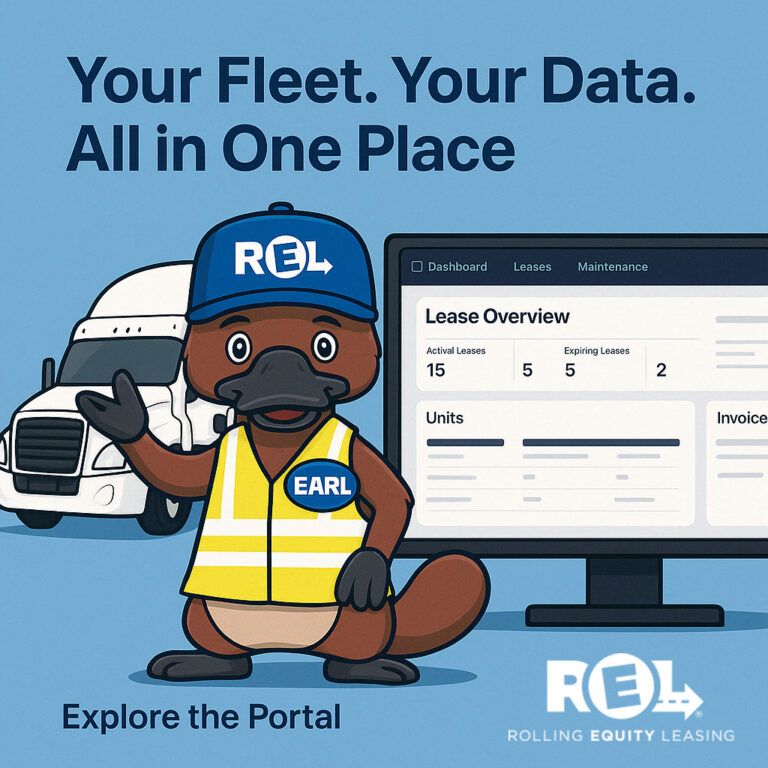
5 Ways the REL Customer Portal Is Changing the Game for TSPs
In an industry where time is money and clarity is power, Rolling Equity Leasing’s customer “Connect” portal is quietly becoming a game-changer for FedEx Transportation Service Providers (TSPs). No more chasing down scattered PDFs, waiting on emails, or losing visibility into your truck leases. The REL Portal gives you real-time access to the data that drives your business.
Here’s how it transforms the way TSPs operate:
1. Instant Access to Lease and Fleet Data
TSPs can now view all active and past leases in one place, no more guesswork. VINs, start and end dates, payment terms, and truck specs are available on demand. It’s full visibility with zero friction.
2. Automated Document Management
The portal centralizes key documents like lease agreements, titles, insurance certs, and maintenance records. Instead of digging through email threads or calling your REL rep, it’s all in your hands—organized, timestamped, and searchable.
3. Maintenance Tracking & Uptime Monitoring
Stay proactive, not reactive. The portal can connect with maintenance data to help you monitor upcoming service needs, minimizing costly downtime. It’s your new early warning system for truck health and performance.
4. Financial Transparency at a Glance
Access your invoice history, payment schedules, and current balances with a few clicks. TSPs can now project monthly cash flow with confidence—making smarter financial decisions without the spreadsheet headache.
5. Customized Experience for Each User
Whether you’re an owner-operator or managing a 30-truck fleet, the portal scales with you. Role-based access ensures drivers, managers, and finance teams only see what they need, keeping sensitive data secure and workflows streamlined.
Final Gear: Visibility Is the New Advantage
In a world where logistics is a 24/7 battlefield, the REL Portal gives TSPs a command center built for speed, clarity, and control. It’s not just a feature, it’s a strategic edge. Ready to take the wheel? Log into your REL Connect Portal today and see the future of truck leasing in action or contact us to learn more!
4/14/25 - Why Leasing Is a Power Move in a High-Interest Rate Market

Why Leasing Is a Power Move in a High-Interest Rate Market
In today’s market, interest rates aren’t just high, they can be punishing. For small and mid-sized trucking companies, especially FedEx TSPs and independent fleet operators, traditional truck financing has become a cash flow killer. Monthly loan payments on new equipment are soaring, driven by rising rates, inflated truck prices, and tightening credit requirements. If you’re still thinking about buying your next truck, it’s time to run the numbers again, because leasing may be your smartest financial move in 2025.
Unlike traditional financing, leasing allows you to avoid massive upfront costs and dodge today’s brutal interest rates. At Rolling Equity Leasing (REL), we offer flexible lease structures designed to help you preserve cash, protect your credit line, and keep your trucks moving. You get predictable monthly payments, without the burden of depreciation, balloon payments, or costly long-term obligations. In an uncertain economy, that kind of stability is everything.
Leasing is also a hedge against future volatility. If rates continue to climb or truck prices spike further due to tariffs or regulatory shifts, you won’t be stuck with outdated equipment or overpriced loan terms. You’ll have the freedom to cycle into newer, more efficient trucks as your business evolves, with no resale headaches. It’s about agility, not ownership.
And let’s not forget taxes. Leasing provides a powerful advantage here too. Depending on how your lease is structured, you may be able to deduct 100% of the lease payments as an operating expense, reducing your taxable income. Compare that with depreciation schedules on purchased trucks, and the leasing benefit becomes crystal clear, especially when every dollar counts.
At REL, we’re seeing more and more TSPs and fleet owners pivot from buying to leasing as they look for smarter ways to scale. They’re choosing strategic flexibility over financial strain. They’re choosing to prioritize uptime, service, and capital efficiency, not title ownership. With REL’s in-house maintenance and vehicle support services, our leasing customers aren’t just saving money, they’re also staying on the road longer, with fewer surprises.
So if you’re weighing your next fleet investment, take a hard look at the numbers. High interest rates don’t have to stall your growth. With REL, you can lease smarter, move faster, and keep your business strong, no matter what the market throws your way.
4/7/25 - The REL Max Equity Lease Advantage
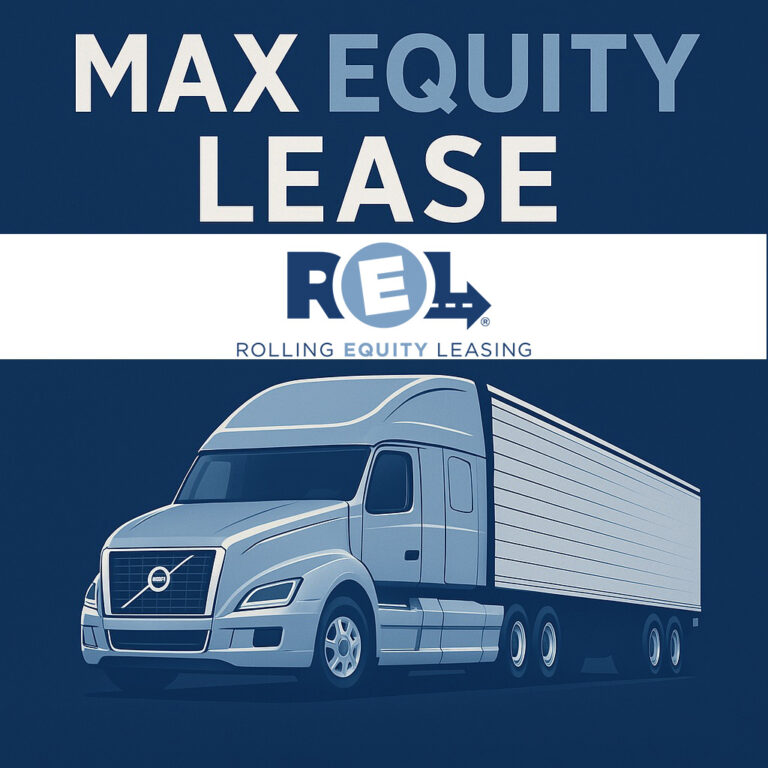
What is the Max Equity Lease and How Does It Work?
The Max Equity Lease is a lease-to-own program that gives you the benefits of ownership – namely building equity in the truck – while keeping payments manageable and including critical support services. In simple terms, it’s a hybrid financing solution: you make lease payments on a truck for a set term, and at the end you have the option to own the truck outright, trade it in for a new one, or refinance it for another term. Unlike a typical lease where you might walk away with no stake in the vehicle, the Max Equity Lease is structured so you’re likely to have built positive equity by lease-end.
Key features of the Max Equity Lease include:
- Lease-to-Own Structure: REL sets a low residual value on each truck, meaning your payments cover most of the truck’s cost. For example, a team-operated sleeper truck might have a residual value of just 45% after a 2-year term, so you’ve paid off 55%. If the truck’s market value holds above 45%, you have equity in the vehicle at term-end. This structure ensures maximum equity value in your truck at the end of the lease. In other words, when the lease ends, you own your truck – or have the flexibility to trade or refinance – with equity on your side.
- Reasonable Payments, No Mileage Penalties: Because of the residual, monthly payments stay affordable – you’re financing the portion of the truck’s value you use, not the entire asset upfront. There are no mileage restrictions or penalties; the program is built for hard-working FedEx linehaul trucks that run high miles. You won’t be punished for putting your asset to work. It’s truly “customized terms, no mileage restrictions, and equity accumulation”, delivering the perfect balance of cost control and long-term investment.
- Flexible End-of-Term Options: At lease end, you’re in the driver’s seat. You can exercise your purchase option to take ownership (using the equity you’ve built as an advantage), trade the truck in for a new lease (rolling your equity forward), or even refinance for a second term on the same truck if it still meets your needs. REL provides twice-yearly independent market value evaluations on your truck throughout the lease, so you have transparency about its value. These updates help you make an informed end-of-term decision to maximize your benefit.
- No Large Down Payments: The Max Equity Lease typically requires little to no down payment (just your first payment and initial fees in many cases). You can obtain 100% financing without a hefty upfront cost, freeing up cash for other business needs. This is ideal for FedEx contractors looking to expand routes or invest in drivers and operations instead of sinking all capital into equipment.
In short, the Max Equity Lease is designed for contractors who want to build ownership in their fleet over time without sacrificing cash flow now. You get into a new truck quickly, run it with support (as we’ll cover next), and come out of the lease with equity – not empty-handed. It’s leasing made entrepreneur friendly.
Comprehensive Support: Maintenance, Safety & More
One of the biggest differences between REL’s Max Equity Lease and a standard bank loan or purchase is the bundled support services that come with the lease. Rolling Equity Leasing is a full-service provider committed to keeping you on the road safely and efficiently. With each Max Equity Lease, you gain access to REL Solutions, an in-house support network for maintenance and operations.
Here’s how REL supports your operations under the Max Equity Lease:
- 24/7 Maintenance Support via REL Solutions Center: Every Max Equity Lease includes a subscription to the REL Solutions maintenance management service. If your truck needs scheduled service or has an unexpected roadside breakdown, REL’s dedicated Solutions Center is available 24/7 to assist. They leverage the negotiating power of the entire REL fleet to get you fast, fair, and high-quality repairs nationwide. You get the benefit of a managed maintenance program (like with a full-service lease) but only pay for the work you actually need – there’s no blanket “cost-per-mile” maintenance fee. This keeps your costs lower while ensuring the truck is well-maintained and safe.
- Bundled Insurance and Warranty Handling: REL bundles critical protections with your lease. Physical Damage insurance for your truck can be included, simplifying your insurance needs (and often at competitive rates due to group buying power). Warranty support is also provided – if your new truck has a warranty issue, REL assists in coordinating with manufacturers and dealers. In fact, REL’s strong relationships with OEMs have proven invaluable in resolving warranty claims quickly and keeping trucks on the road. You won’t be left to navigate warranty service alone.
- FedEx Compliance and Safety Requirements: As specialists in FedEx Ground operations, Team REL understands all the safety and compliance specifications your trucks must meet. Every truck in the Max Equity Lease program is FedEx Ground spec’d from day one – from required telematics and camera systems to proper decals and safety equipment. REL will even handle installation of your provided vehicle event recorders (cameras), electronic logging devices (ELDs), and FedEx decals as part of the lease onboarding. This means zero delay in getting your truck on route and no hassle ensuring it meets FedEx standards. Your truck will be “FedEx-ready” when you take delivery.
- Nationwide Reach and Rental Support: Whether you operate in one state or across the country, REL has you covered. As a nationwide provider of lease financing and services, REL supports contractors with trucks in multiple locations. If your leased truck goes down for repairs, REL can arrange rental replacement trucks to keep your routes moving – a critical service for FedEx contractors who cannot afford downtime. This minimizes the risk of missed deliveries or service failures. (Finding trucks with the proper safety spec on short notice can be challenging on your own, but REL’s network helps solve that).
In essence, the Max Equity Lease comes with a team – Team REL – that partners with you in operating your fleet. It’s not “lease it and forget it”; they stay alongside you for the journey. Many customers describe it as a true partnership rather than a typical vendor relationship:
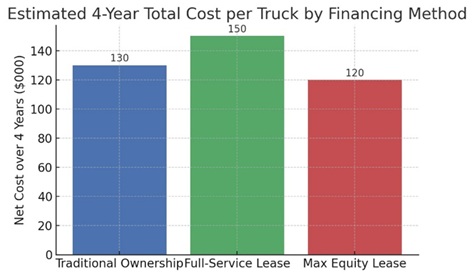
3/27/25 - Impact of Possible Tariffs on Semi-Truck Sales
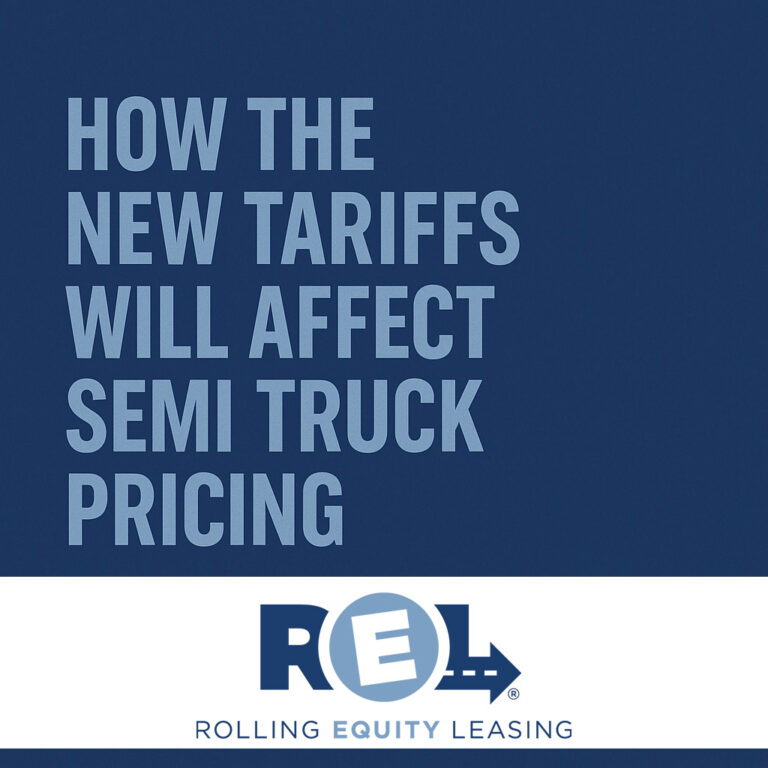
Impact of Possible Tariffs on Semi-Truck Sales
Recent proposed tariff plans – notably the 25% duty on imported steel and aluminum have drawn close attention in the trucking industry. These tariffs aimed to protect U.S. metal producers, but they also raised input costs for manufacturers that rely on steel and aluminum. Semi-truck production is especially affected, as each Class 8 truck contains thousands of pounds of steel and aluminum. Below we analyze how such tariffs could influence manufacturing costs, truck prices, and sales trends in both the short and long term, incorporating reactions from truck makers, fleet operators, and industry analysts.
Higher Manufacturing Costs and Material Prices
Tariffs on steel and aluminum increase manufacturing costs for heavy trucks. When the U.S. applied broad metal import tariffs in 2018, domestic steel prices climbed sharply, putting downstream manufacturers at a disadvantage. Truck builders like Freightliner, Peterbilt, and Volvo suddenly faced pricier raw materials for frames, cabs, engines, and trailers. According to PACCAR’s trade analysis, the immediate result of the 25% steel tariff was higher market prices for steel and aluminum, making it “most likely” that trucks will become more expensive as manufacturers pass along these costs. In fact, analysts noted that even if an OEM sources mainly domestic metal, U.S. mills raised prices due to reduced import competition – effectively forcing truck makers to pay more across the board.
Manufacturers have limited ability to absorb such cost increases, so they must either accept lower profit margins or raise vehicle prices. Many have opted to adjust supply chains or negotiate with suppliers. For example, automakers like Ford shifted toward domestic steel sources (over 90% domestic in Ford’s case) to mitigate tariff exposure. However, domestic supplies were not immune to price hikes. Industry groups pointed out that the U.S. cannot instantly produce enough steel/aluminum to meet demand, so shortages and rising input costs were inevitable. In summary, Trump’s metal tariffs quickly drove up raw material costs for truck manufacturing, creating inflationary pressure on new equipment prices.
Rising Truck Prices and Fleet Responses
As material costs rose, new truck prices began climbing. Analysts at ACT Research projected that across-the-board tariffs on North American trade partners would raise U.S. Class 8 truck prices by 8% to 10% on average. In extreme cases, the American Trucking Associations (ATA) warned that a 25% tariff on Mexican-built trucks (Mexico is a major production hub for tractors) could drive up the price of a new truck by as much as $35,000. Such a spike would be “cost-prohibitive for many small carriers”, ATA President Chris Spear noted, and would add tens of millions in costs annually for large fleets.
Truck manufacturers initially tried to manage costs internally, but sustained tariffs left little choice but to adjust pricing. Some OEMs added steel surcharges or announced price increases to their dealer networks to offset higher input expenses (industry reports in 2018 noted trailer manufacturers were seeing up to 5% cost increases from the tariffs, which would be passed on to buyers). These rising prices prompted mixed responses from trucking companies:
- Pre-buying and Advance Orders: Facing imminent price hikes, some fleets accelerated purchases in the short term. For instance, towards the end of 2024 (when new tariffs were being discussed again), North American fleets placed a surge of truck orders, partly to lock in current prices before tariffs and new emissions rules took effect. Analysts reported an unusually strong December order volume, suggesting buyers were trying to get ahead of expected cost increases.
- Delayed Purchases: Conversely, other carriers hit pause on new equipment orders amid the uncertainty. In early 2025, as tariff threats loomed, Class 8 orders dropped well below normal levels – down ~34% year-over-year in February, according to FTR – which analysts attributed to policy uncertainty and tariff fears making businesses hesitant to invest. This reflects a wait-and-see approach: fleets didn’t want to overpay for trucks if there was a chance trade tensions might ease, but they also didn’t want to buy too late and get caught by higher prices.
- Leasing and Used Trucks: Higher new truck prices also made used trucks and leasing options more attractive. Small operators in particular, who often operate on thin margins, might retain older trucks longer or turn to the secondary market rather than paying a premium for new models. Indeed, used truck sales saw a late-2024 jump, and analysts suggested it was because buyers were timing purchases ahead of “impending value increases” in new trucks. If tariffs remained, the ripple effect would likely raise used truck values (since new equipment costs more) and potentially extend the trade-in cycles for fleets.
Conclusion
Tariff policies on steel, aluminum, and imported goods injected both higher costs and greater uncertainty into the semi-truck market. In the short term, those tariffs drove up the cost to build each truck – by anywhere from a few thousand dollars to tens of thousands in extreme cases – leading manufacturers to raise prices and some fleets to rush purchases before increases hit. At the same time, retaliatory moves and higher consumer prices slowed trade flows, threatening freight demand and new truck orders (Tariffs will have ‘direct and disproportionate’ effect on truckers, industry warns | Trucking Dive). In the longer term, the industry could adapt by altering supply chains (sourcing more domestically or shifting production) and adjusting fleet renewal strategies, but not without friction. Both trucking companies and truck builders voiced concern that these tariffs, if prolonged, would act as a drag on sales and profitability. As a result, industry analysts largely concur that while some of the tariff’s pain can be managed, the net effect is a headwind for truck sales and production: higher truck prices, squeezed margins, and potentially fewer trucks sold than in a free-trade environment. The consensus from manufacturers, carriers, and analysts is that stability and open trade are more conducive to a strong trucking market – and that prolonged trade wars create challenges that could reverberate through the trucking industry for years to come. But for now you can pick up pre-tariff, 2025 inventory to avoid this price increases.
Sources:
- S&P Global Mobility – Tariffs Impact on Trucking Industry
- FleetOwner – Trucking industry grapples with tariff uncertainty
- Trucking Dive – ATA President on Tariffs’ Impact (Tariffs will have ‘direct and disproportionate’ effect on truckers, industry warns | Trucking Dive) (Tariffs will have ‘direct and disproportionate’ effect on truckers, industry warns | Trucking Dive)
- TheTrucker.com – Tariffs may push truck prices higher
- PACCAR (PacLease) – Trade War Impact on Truck Industry
- Reuters / PBS – Steel tariff effect on downstream prices and trade updates
- FTR & ACT via TheTrucker – Class 8 Orders & Tariff Troubles
- Automotive Dive – Steel/Aluminum tariffs and auto prices and Federal Reserve analysis.
3/17/25 - A.I Tech in Truck Leasing?
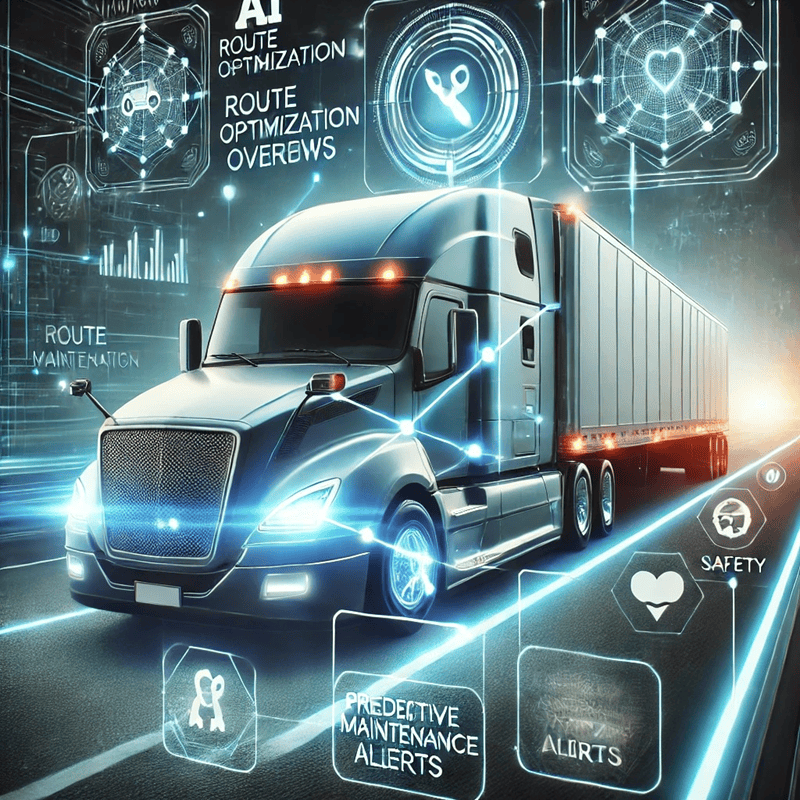
AI in the Trucking Industry
AI technology is transforming the trucking industry in several significant ways, from optimizing logistics to enhancing vehicle safety. One of the most notable advancements is in route optimization, where AI-powered software analyzes traffic patterns, weather conditions, and fuel efficiency to determine the best possible routes. This reduces fuel costs, minimizes delivery delays, and improves overall fleet efficiency. Additionally, AI-driven predictive maintenance helps trucking companies prevent costly breakdowns by analyzing vehicle data to detect potential issues before they become major problems. These improvements not only save money but also contribute to a more reliable supply chain.
Another major impact of AI is the development of autonomous and semi-autonomous trucking technology. Companies like Tesla, Waymo, and TuSimple are actively testing and refining self-driving trucks that have the potential to revolutionize freight transport. While fully autonomous trucks are not yet widespread, AI-assisted driving features such as lane-keeping assistance, adaptive cruise control, and automatic braking are already being integrated into modern fleets. These technologies enhance driver safety by reducing fatigue-related accidents and human errors. Furthermore, AI-powered monitoring systems can track driver behavior, ensuring compliance with safety regulations and reducing liability risks for trucking companies.
AI is also reshaping workforce dynamics in the trucking industry. While automation raises concerns about job displacement, it is also creating new opportunities in areas such as fleet management, data analysis, and AI system maintenance. Truck drivers are increasingly working alongside AI rather than being replaced by it, with AI tools assisting in load optimization, regulatory compliance, and fuel management. Additionally, AI-driven customer service solutions, such as chatbots and automated tracking updates, improve communication between carriers and clients, enhancing customer satisfaction. As AI continues to evolve, the trucking industry will likely experience increased efficiency, improved safety, and new career paths, ultimately shaping the future of freight transportation.
3/10/25 - REL Values
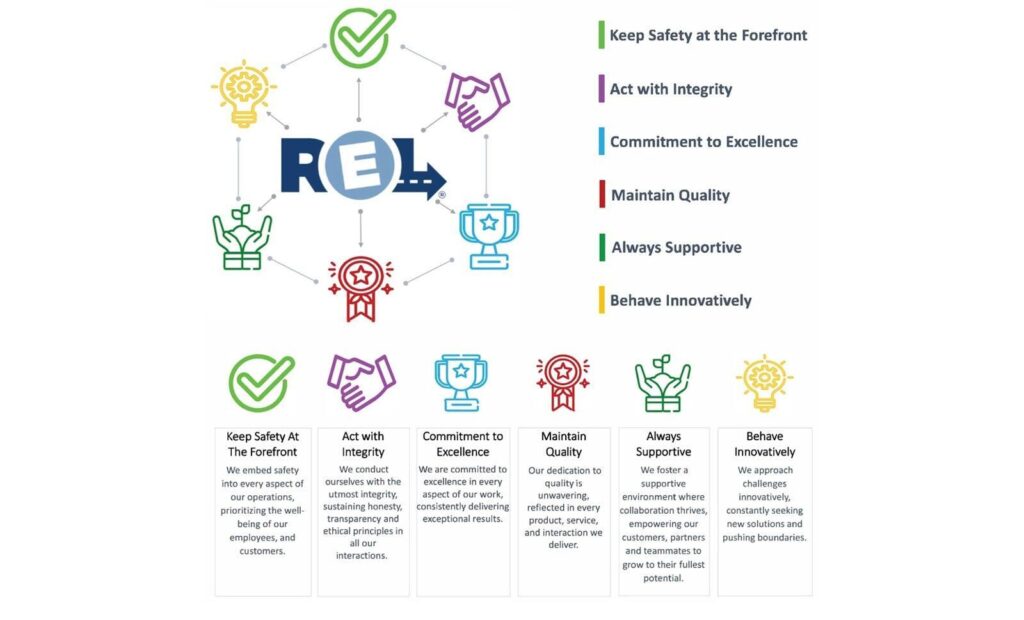
REL Values
Our mission, at Rolling Equity Leasing, is to empower our customers, of all sizes, by providing top-of-the-line transportation equipment, flexible lease options, and innovative solutions that enhance efficiency and profitability. Through unwavering commitment to quality, safety, and excellence, we aspire to be the trusted partner driving success for our customers, while fostering a culture of respect, integrity, and exceptionalism within our organization and community.
2/18/25 - Attending the Linehaul Summit?
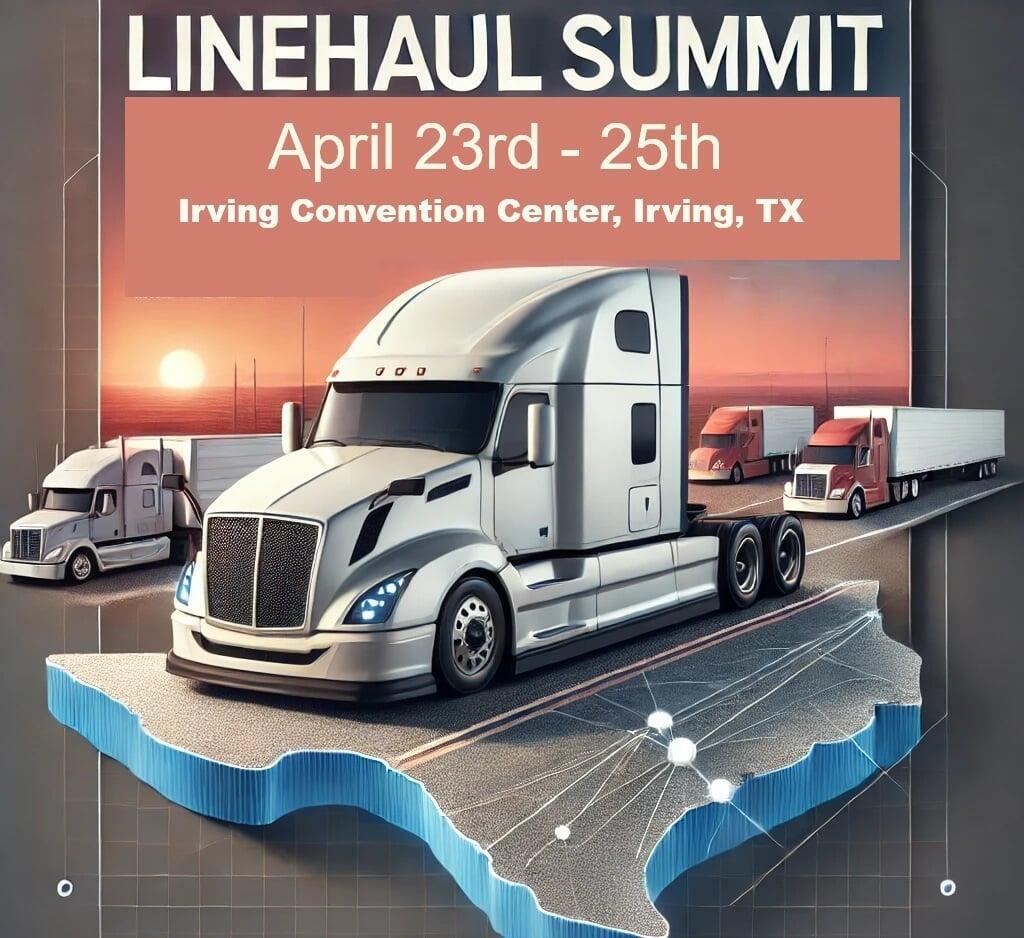
Are You Attending the Linehaul Summit This Year?
Attending the Linehaul Summit in Texas this April is a must for any trucking industry executive looking to stay ahead in an increasingly dynamic and competitive market. This premier event brings together industry leaders, innovators, and decision-makers for two days of high-impact discussions on the future of linehaul trucking. With sessions covering cutting-edge technology, evolving regulations, and market trends, the summit provides critical insights that can help shape your company’s strategic direction. The networking opportunities alone make it worthwhile, offering a rare chance to connect with peers who understand the unique challenges and opportunities within the linehaul sector.
The trucking industry is evolving rapidly, with innovations like autonomous technologies, optimized logistics solutions, and sustainability initiatives redefining what it takes to succeed. The Linehaul Summit offers attendees direct access to thought leaders driving these changes, ensuring your organization remains informed and competitive. From expert panels discussing freight market fluctuations to workshops on operational efficiencies, the summit is designed to deliver practical knowledge that you can implement immediately to enhance performance and profitability.
Beyond the sessions and speakers, the Linehaul Summit creates an environment for meaningful connections. Whether you’re looking to establish new partnerships, explore emerging technologies, or share best practices, this event serves as a catalyst for collaboration and growth. Texas, as a key hub for North American trucking, is the perfect backdrop for these conversations. Don’t miss the chance to position your company for success in the future of linehaul transportation—register today at Linehaul Summit and join the leaders shaping the next chapter of our industry.
2/13/25 - Lease v. Buy
2/10/25 - Unlocking Fleet Efficiency with REL Solutions
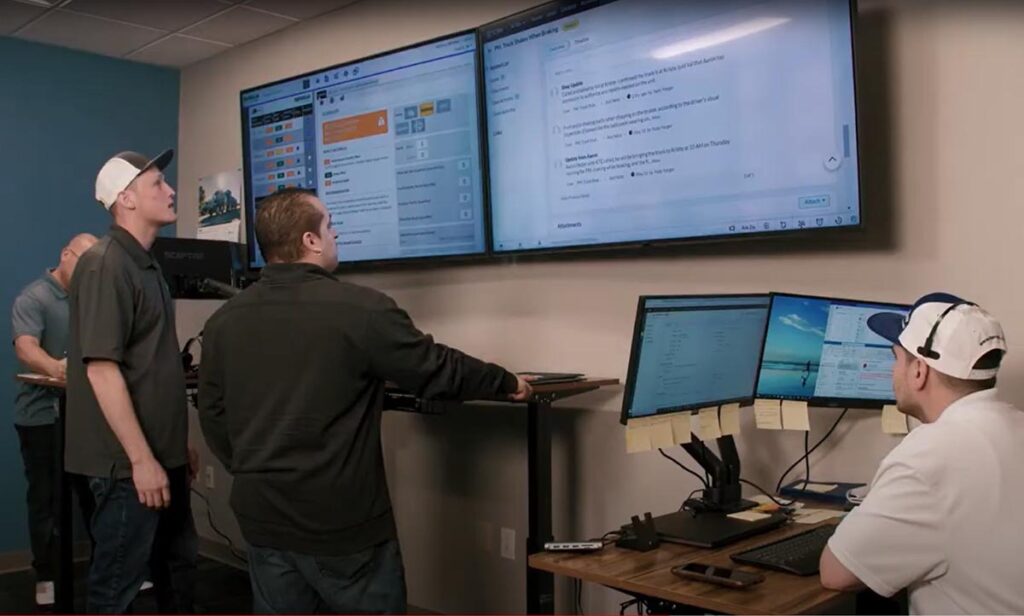
In today’s competitive transportation industry, maintaining fleet efficiency and minimizing downtime are crucial for success. Rolling Equity Leasing (REL) addresses these needs through its comprehensive REL Solutions Center, offering 24/7 support and a suite of services designed to keep your operations running smoothly.
REL Solutions Center: Your Partner in Fleet Management
The REL Solutions Center comprises a team of industry professionals available around the clock to assist with maintenance and repair events. While proactive preventative maintenance is emphasized to avert potential issues, the team is prepared to manage any roadside events that may occur. Whether it’s a simple tire replacement, a complex breakdown, or sourcing hard-to-find parts, REL Solutions is equipped to handle it all.
Key Features of REL Solutions:
Fault Code Monitoring: Continuous oversight to detect and address vehicle issues promptly.
24/7 Support: Assistance is available at any time, ensuring that help is just a call away.
Fleet Metrics & Reports: Access to detailed analytics to monitor fleet performance and identify areas for improvement.
National Parts & Service Discounts: Benefit from cost savings through established partnerships and discount programs.
Roadside Assistance: Immediate support during unexpected breakdowns to minimize downtime.
Service Invoice Audits: Thorough reviews of service invoices to ensure accuracy and cost-effectiveness.
Preventative Maintenance: Scheduled services aimed at preventing issues before they arise, enhancing vehicle longevity.
Invoice Payments Via Escrow: Streamlined payment processes for services rendered, adding a layer of financial security.
Customized Solutions for Your Fleet
Understanding that each business has unique requirements, REL Solutions offers tailored packages and services designed with your specific needs in mind. The goal is to save you time and money while building and maintaining strong relationships. With a single call to the dedicated team, you can expect resolutions aimed at improving uptime and overall fleet efficiency.
Experience the REL Difference
By partnering with REL Solutions, you’re choosing a proactive approach to fleet management that prioritizes uptime, cost savings, and personalized support. Experience superior service and discover how REL can keep your fleet moving efficiently.
For more information or to get started, contact us!




